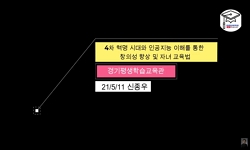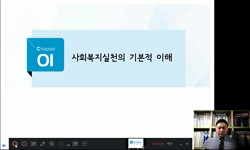This study aims to provide information on how to raise older adult consumers’ acceptance rates of senior-friendly smartwatches and to present practical implications for their support. This study explored older adults’ acceptance of senior-friendly...
http://chineseinput.net/에서 pinyin(병음)방식으로 중국어를 변환할 수 있습니다.
변환된 중국어를 복사하여 사용하시면 됩니다.
- 中文 을 입력하시려면 zhongwen을 입력하시고 space를누르시면됩니다.
- 北京 을 입력하시려면 beijing을 입력하시고 space를 누르시면 됩니다.

고령자 친화형 스마트워치의 노인 소비자 수용과 사회복지사, 자녀의 평가 연구 - 통합기술수용모형을 중심으로 - = Older Adult Consumers’ Acceptance of Senior-Friendly Smartwatches and the Evaluation of the Smartwatches by Social Workers and Adult Children
한글로보기https://www.riss.kr/link?id=A108907660
- 저자
- 발행기관
- 학술지명
- 권호사항
-
발행연도
2023
-
작성언어
Korean
- 주제어
-
등재정보
KCI등재
-
자료형태
학술저널
-
수록면
133-164(32쪽)
- 제공처
-
0
상세조회 -
0
다운로드
부가정보
다국어 초록 (Multilingual Abstract)
This study aims to provide information on how to raise older adult consumers’ acceptance rates of senior-friendly smartwatches and to present practical implications for their support.
This study explored older adults’ acceptance of senior-friendly smartwatches with various healthcare functions and senior user interface (UI) and examined the factors affecting their acceptance using the Unified Theory of Acceptance and Use of Technology (UTAUT) model. It also surveyed social workers and adult children, the main supporters of the older adult generation, regarding their evaluations of senior-friendly smartwatches and related welfare policies. Online surveys were conducted with 300 consumers aged 60 years and older, 30 social workers, and 200 children with their parents.
The results showed that older adult consumers’ perceived usefulness and perceived necessity of the individual functions of senior-friendly smartwatch and their intention to use them were strong. Particularly, functions such as emergency rescue calls and heart rate, blood oxygen, and physical activity monitoring received relatively higher scores. There are significant differences among older adult consumers in terms of sociodemographic/household characteristics, healthcare conditions, and digital device proficiency. Among the four antecedent factors from the UTAUT model, performance expectancy and social influence had significant positive effects on the intention to use the smartwatch, and the intention to use the device positively affected the intention to purchase it. The impact of performance expectancy on intention to use was greater for older adults living alone than for those living with other family members, and the impact of social influence on intention to use was significant only for the latter. For older adults with high digital device proficiency, the intention to use the device significantly increases their purchase intention. Finally, both social workers and children favored all healthcare functions of the senior-friendly smartwatch, and their preferences among the functions showed similar pattern to older adults, who preferred emergency calls and physical monitoring functions.
There were significant differences in children’s perceptions of their parents’ acceptance level of the device according to their parents’ age, health care conditions and especially digital device proficiency level. Family members and professional older adult care personnel were chosen as the preferred support sources for older adults by both social workers and children. Social workers prioritized supporting older adults living alone and excluded from healthcare access.
They also selected those who were enthusiastic about their health and had high digital proficiency for prior support. Social workers and children have proposed Senior-friendly UI and functions such as voice alarms, automatic sensor, and AI to improve older adults’ smartwatch usability, as well as repetitive face-to-face education and prompt network connectivity between the device and medical/welfare facilities.
This study considered the characteristics of older adult consumers and the specific senior- friendly functions designed for the prototype device to create research model, providing practical implications for increasing older adults’ acceptance of the device. Furthermore, data from not only older adults but also their children and social workers were analyzed to improve the results’ reliability and draw multifaceted implications for practice.
동일학술지(권/호) 다른 논문
-
MZ세대 소비자의 불매운동에 대한 연구: 침묵의 나선이론을 중심으로
- 한국소비자학회
- 유서영
- 2023
- KCI등재
-
이웃과 거래하는 사람들: 지역기반 중고거래에 대한 질적연구
- 한국소비자학회
- 이수현
- 2023
- KCI등재
-
제품 희소성 메시지와 메시지 색상이 소비자 제품태도에 미치는 영향
- 한국소비자학회
- 정예지
- 2023
- KCI등재
-
- 한국소비자학회
- 홍수정
- 2023
- KCI등재




 KCI
KCI KISS
KISS






